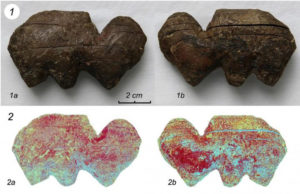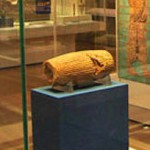 NOVOSIBIRSK, RUSSIA—Drills, cutters, and leveling blades were employed more than 20,000 years ago to carve the mammoth-ivory figurines and beads recovered from
NOVOSIBIRSK, RUSSIA—Drills, cutters, and leveling blades were employed more than 20,000 years ago to carve the mammoth-ivory figurines and beads recovered from
south-central Siberia’s Ust-Kova site, according to a statement released by Siberian Federal University . L.V. Lbova of Novosibirsk State University and Nikolay Drozdov of Siberian Federal University and their colleagues studied markings on the figurines and jewelry under a microscope in order to identify the tools that had been used to shape them. They then used those tools to recreate the objects and the markings. Chemical analysis of the ancient carvings indicates that the sculptures were painted with manganese and magnesium that was probably extracted from salt rocks located near the archaeological site. A figurine depicting a mammoth, for example, had been painted red on one side and black on the other. Layers of pigment on the beads suggest they were regularly repainted over many years. The researchers think that tool use studies could help them to identify the styles of individual master carvers, while a comparison of carving techniques between different archaeological sites in the region could offer information about relationships between the groups who once lived there















